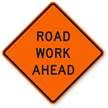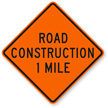Expert: Traffic jams signal economic vitality
Drivers take for granted that traffic jams are “bad” — who wants to sit at a standstill, burning off gas and anxiously planning out how we’ll compensate at work for the lost time? Yet a recent study suggests that in certain metro areas, traffic isn’t always all that bad — in fact, in certain areas of the U.S., it’s an important indicator for economic health.
The study, which was led by Matthias Sweet, a researcher at the McMaster Institute for Transportation and Logistics at McMaster University, suggests that traffic jams are, at least initially, associated with speedier economic growth. Yet, above a certain point, traffic turns decidedly negative. Sweet 
Is it possible that America’s prosperity is bought with your irritation at spending hundreds of hours a year in a glorified parking lot like this street in Seattle? From Oran Viriyincy.
For the study, Sweet analyzed info from 88 of the country’s most traffic-plagued metro areas between 1993-2008, accounting for travel delay and travel capacity. (For travel delay, he analyzed the average yearly delay, in hours, per car commuter; for travel capacity, he analyzed the “average daily traffic per freeway lane throughout an entire metro network.”) Sweet also used info from the Federal Transit Administration and the Census Bureau, in order to control for other economic-related causes, such as transit infrastructure, job density, and the local labor force’s skill level.

If an area hasn’t yet reached the threshold where traffic becomes a liability to economic growth, it shouldn’t waste funds on, say, creating an unnecessary new road. Image from imnotquitejack.
While traffic is initially a positive indicator for economic growth, it can and does turn negative. Traffic seems to slow down job growth when it exceeds 35-37 delay hours per commuter each year. That’s about 4.5 minutes per one-way commute. When traffic reaches that point, commuters are affected in other ways as well — their quality of life takes a hit, and they may start looking for other jobs. People leaving their jobs can negatively affect the area’s economy.
Yet in some areas, approaching traffic as a major problem may divert resources and stymie economic development. If an area hasn’t yet reached the threshold where traffic jams become a liability to economic growth, it shouldn’t waste funds on, say, creating an unnecessary new road. Still, despite “bad” congestion, Sweet did not find that traffic, on its own, could stall an area’s economic growth. While it can exert a negative force, other factors, such as transportation infrastructure, local demographics and government, have far too much impact on an area’s economic growth (or lack thereof).
What are the most common causes of traffic? The U.S. Department of Transportation’s Federal Highway Administration has released research showing that congestion has steadily been on the rise, growing from under 20 hours of delay yearly in 1982 in very large population areas, to over 50 hours of yearly delay in 2005 in the same areas. It also names the top causes of traffic congestion as: bottlenecks (40%); traffic incidents (25%); bad weather (15%); work zones (10%); poor signal timing (5%); and special events (5%). The top offender by far is bottlenecking — bottlenecks are points where the road narrows, causing backups.
Commuters can avoid or mitigate some of these major traffic causes by planning alternate routes and listening to traffic reports pre-departure; and being aware of construction work, accident-related backups, and special events, such as presidential visits, which may impact traffic. Yet the bulk of the work is up to government officials, infrastructure engineers and city planners — updating or replacing outdated roads and improving existing infrastructure in those high-traffic areas that exceed Sweet’s threshold for economic growth may counteract traffic’s negative impact.
Category: Trends


















